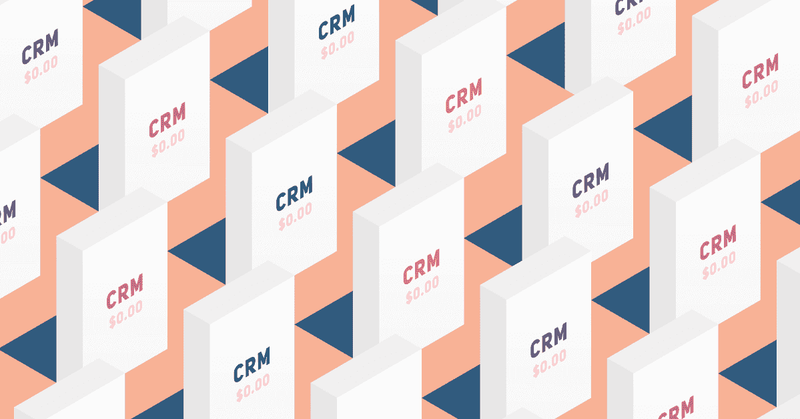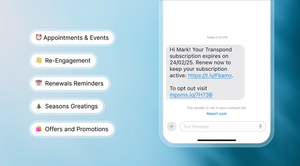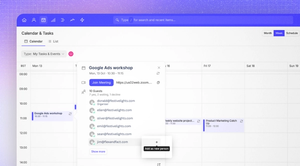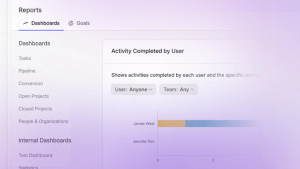Customer relationship management (CRM) is a hot topic these days. But even though many people know the technology only few truly know what’s hidden behind it.
You see, a CRM is more than just another tool – it has the potential to enhance your productivity. However, it’s crucial to use a CRM tool effectively.
Today, we'll share the best CRM practices to boost your sales, increase customer satisfaction, improve business efficiency, streamline customer data management, and much more.
9 CRM best practices for your business
CRM is crucial for any business. That's because it helps you manage and nurture better relationships with your customers to improve their satisfaction and win their loyalty.
These are nine CRM best practices to help your business excel in this area:
1. Define clear objectives
Start your CRM adventure with a rock-solid plan to pin down exactly what you want to achieve.
Whether it’s improving customer relations, streamlining sales processes, or getting a better handle on data, clear objectives keep everyone in the loop and working together efficiently.
For example, if you want to boost customer satisfaction, you’ll need to tailor your CRM to keep track of every customer interaction and gather their feedback thoroughly. This way, you can use the software to its full potential and ensure that your team is focused on what matters most.
Top tips:
- Be specific – instead of a vague goal like “improve satisfaction”, aim for “increase Net Promoter Score (NPS) from 30 to 40 in the next quarter by improving response times and customer engagement through the CRM.”
- Link to business goals – if a major business goal is to increase sales by 20% this year, set a CRM objective to “increase lead conversion rates by 15% through improved lead tracking and personalized communication.”
- Involve all departments – hold a workshop with representatives from sales, marketing, customer service, and any other departments using the CRM to set objectives that align with everyone’s needs.
2. CRM training
Remember, a CRM solution is only as good as the people using it. It's vital to make sure that your team is well-versed in using the CRM software.
This should be of particular interest to staff who are in direct contact with customers. Keep the training hands-on, provide a point of contact for any CRM issues, and have resources available for self-learning.

The right training will let your team use the tool efficiently and this will lead to better customer interactions and data management.
Top tips:
- Customized training programs – design training sessions specifically for sales, marketing, and customer service teams focusing on CRM features most relevant to their roles.
- Ongoing training – schedule monthly refresher courses and update training when new features are released to keep all users up to date.
- Accessible resources – create a comprehensive resource library including video tutorials on how to use different features of the CRM and make it accessible for all employees.
3. Data quality maintenance
It’s simple: bad data in, bad data out. Keeping your customers' data clean and up-to-date is non-negotiable.
Regularly check for and remove any duplicate entries, and verify if all information is up-to-date. This helps confirm that your team has the right information when they need it, which is game-changing for customer support and strategic decision-making.
Thanks to maintaining high data quality, your CRM becomes a reliable resource for your business.
Top tips:
- Bi-monthly data audits – conduct thorough audits of CRM data every two months to identify and correct errors or inconsistencies.
- Standardized data entry protocols – develop a detailed manual outlining how data should be entered into the CRM including examples and best practices.
- User accountability – implement a system where users are notified and required to update or verify the data they’ve entered if it’s flagged as potentially inaccurate.
4. Regular updates and upgrades
Don’t let your CRM fall behind. Keep an eye out for software updates and get them implemented across your team as soon as possible.
Updates are not just about getting the latest features – they’re also crucial for keeping your customer data secure. Your CRM system should always run on the latest version if you want to take full advantage of new features and security enhancements. This will help you avoid cybersecurity threats like identity theft, phishing and other attacks.
Top tips:
- Update notifications – set up alerts to notify the IT team as soon as a new update or security patch is available.
- Test environment – before rolling out an update company-wide, test it in a controlled environment to maintain compatibility and identify potential issues
- Training on new features – if an update includes new features, provide training sessions and resources so that all users can take full advantage.
Look for a CRM solution that is extremely functional and secure – like Capsule.
5. Segment data
Customer segmentation is like hitting the jackpot for your marketing and customer service teams. Use your CRM data to group customers based on their purchase history, preferences, or behavior.
For example, you can send personalized product recommendations to customers based on their past purchases. This targeted approach leads to a better customer experience and more effective marketing campaigns.
Top tips:
- Detailed criteria for segmentation – set specific criteria for customer segmentation, such as “customers who have purchased in the last 30 days”. Some segmentation frameworks you can use include geographic, demographic, psychographic, behavioral, benefit, and occasion.
- Dynamic segmentation – use CRM features to create dynamic segments that automatically update based on customer behavior.
- Personalized communication – use segmentation to send personalized email campaigns, such as product recommendations based on past purchases.
6. Integrate with other systems
Your CRM software shouldn’t be an island, so integrate it with your other business tools for a seamless experience. When all your systems are talking to each other, data flows freely, giving you a complete view of customer interactions.
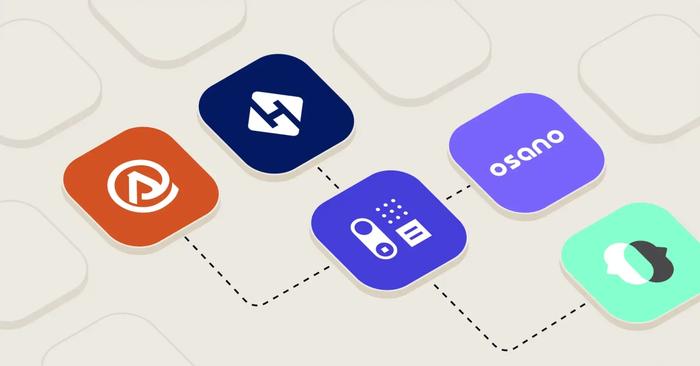
For instance, integrating your CRM with your email marketing tool lets you send personalized messages based on data about customers and enhances the customer experience.
Top tips:
- Identify key integrations – list out and prioritize which external systems (e.g. email marketing, customer support software) would most benefit from integration with your CRM.
- Ensure synchronization – set up your integrations to synchronize data daily to power all systems with the most up-to-date information.
- Automated workflows – use integrations to automate workflows, such as creating a support ticket in your customer service software when a client issue is logged in the CRM.
7. Monitor key metrics
Keep a close eye on key performance indicators (KPIs) to guide your business decisions. Set clear KPIs for your CRM implementation and monitor them regularly.
Whether it’s customer satisfaction, sales performance, or customer retention, these metrics provide insights into how well your CRM system and strategies perform. Use these insights to make informed decisions and steer your business in the right direction.
Top tips:
- Clear KPIs – define specific KPIs such as “increase customer lifetime value from $1,000 to $1,500” or “reduce churn rate from 5% to 3%”.
- Real-time dashboards – set up a dashboard in your CRM that displays real-time data on your key metrics.
- Monthly performance reviews – hold a monthly meeting to review CRM performance against KPIs, identify areas for improvement, and adjust strategies as needed.
8 User access control
Not everyone needs access to everything. Pay attention to whether or not every user has the appropriate access they need to do their job and nothing more.
This approach helps to keep data secure. What's more, this way your data remains accurate. Implementing strict user access controls and monitoring logs is a critical step in maintaining the integrity of your CRM data.
*Top tips:
- Define access levels – clearly define different access levels so that all roles in your organization have access only to the data and features they need.
- Quarterly access reviews – every quarter, review user access levels to check if they are still appropriate and make adjustments as you need..
- Security training – provide annual training to all users on security best practices and the importance of safeguarding customer data.
9 Regular audits and reviews
Give your CRM systems a regular check-up by reviewing user access levels, keeping your data clean, and verifying that your CRM strategies are on track.
Regular audits help to identify and address any issues before they become major problems. And do you know what this means? Your CRM system can continue to be a valuable asset for your business.
Top tips:
- Annual CRM audit – conduct a comprehensive audit of your CRM system and data at least once a year.
- User feedback surveys – send out quarterly surveys to CRM users to gather feedback on system usability, data quality, and any challenges they are facing.
- Security protocol review – as part of your annual audit, review and update your data security protocols.
Some other CRM best practices include:
- Choose the right CRM – implementing a tool that fits your needs is critical (keep reading to find out what the best solution is).
- Feedback loop – establish a feedback mechanism to gather input from users and make continuous improvements.
- CRM automation – an automated CRM is an effective CRM, so invest in CRM automation as this will let you save time and other resources.
Implement CRM best practices with Capsule to enjoy efficient customer relationship management
If your goal is to succeed at CRM, you need the right solution for that – there's no doubt about it.
Capsule is an online Customer Relationship Management (CRM) system designed to help businesses like yours build stronger relationships with customers, drive more sales, and save time.
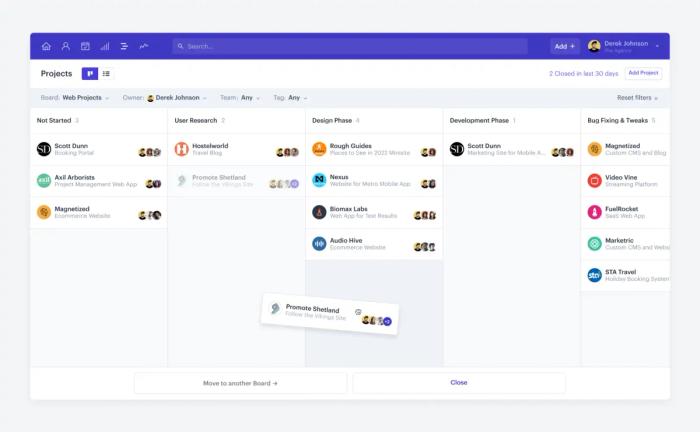
Here’s how Capsule will help you master CRM easily and effortlessly:
Contact management
Capsule CRM serves as the right CRM solution because it provides a centralized place for all your customer information. Thanks to that, you can easily track conversations and understand customer history.
In addition, our solution simplifies data entry processes. As such, you can be more organized and deliver personalized experiences to your customers. Sounds good, doesn't it?
Sales pipeline
Capsule is regarded as one of the best CRM platforms for managing your sales pipeline effectively. We’ll help you tailor your approach and identify priority deals that need attention.
On top of that, using Capsule’s CRM analytics allows you to see the big picture and make informed business decisions to enhance your sales performance.
Workflow automation
Our CRM tool is easy to implement thanks to its workflow automation feature. You can wave goodbye to repetitive tasks and say hello to making work quicker and more consistent.
Integrations
When you choose a CRM like Capsule, you are not just getting a standalone product. The reality is that you're getting a platform that integrates seamlessly with tools you already use, such as:
- Microsoft Outlook
- Mailchimp
- QuickBooks Online
- and much, much more
Solutions
Capsule will easily suit your needs, whether you're a:
- startup
- small business
- mid-sized business
- a company operating in specific industries such as finance, SaaS, photography, customer service, and more.
Resources
The Capsule CRM can help you out with lots of amazing resources, all readily available at your disposal:
- Video tutorials – on-demand tutorials and walkthroughs.
- Support documentation – comprehensive documentation to assist with any queries.
- Customer stories – testimonials and stories from businesses that have benefited from using Capsule.
These will all help you get your dream outcomes when it comes to your CRM goals.
Pricing and plans
Whether you are looking for a new CRM or aiming to upgrade, Capsule offers different plans. This includes the Growth plan for businesses looking to drive sales performance with advanced features.
Don't wait, explore all of our features today:
- contact management
- sales pipeline
- workflow automation
- email marketing & tools
- sales analytics
- AI content assistant
- tasks & calendar
- projects
CRM culture audits: is your team aligned or just compliant?
Using a CRM doesn’t always mean your team is aligned with it. Sure, the fields are filled and tasks are logged – but is the CRM actually helping your team make better decisions or improve relationships?
That’s where a culture audit comes in. Instead of focusing on feature usage, it looks at how your team feels about the CRM – and how much they rely on it day to day.
Here’s what to look for:
Signs your team is just going through the motions:
- CRM data is updated only before meetings or reporting deadlines
- Notes are vague or copied from emails without context
- Deals “magically” move through the pipeline with no recorded activity
- Spreadsheets or sticky notes still exist on the side
Questions to ask during a quick CRM culture check:
- Do you trust the accuracy of data in the CRM?
- If the CRM disappeared tomorrow, how would your work be affected?
- Is our CRM helping us work smarter—or just adding steps?
If you’re seeing red flags, don’t jump to blame. Start by reconnecting CRM usage to real outcomes: faster handovers and better forecasting. Then build it into daily rituals – mention it in standups, review pipelines as a team, and spotlight success stories where the CRM saved time or helped win a deal.
CRM adoption is a checkbox. CRM alignment is a mindset. Aim for the second.
CRM implementation – best practices made easy
So there you have it. CRM best practices that will revolutionize your relationship with customers. To further boost your efforts, we recommend trusting Capsule – the best CRM software out there.
Use CRM without a single worry – let Capsule help you get the best outcomes. Try it today.
